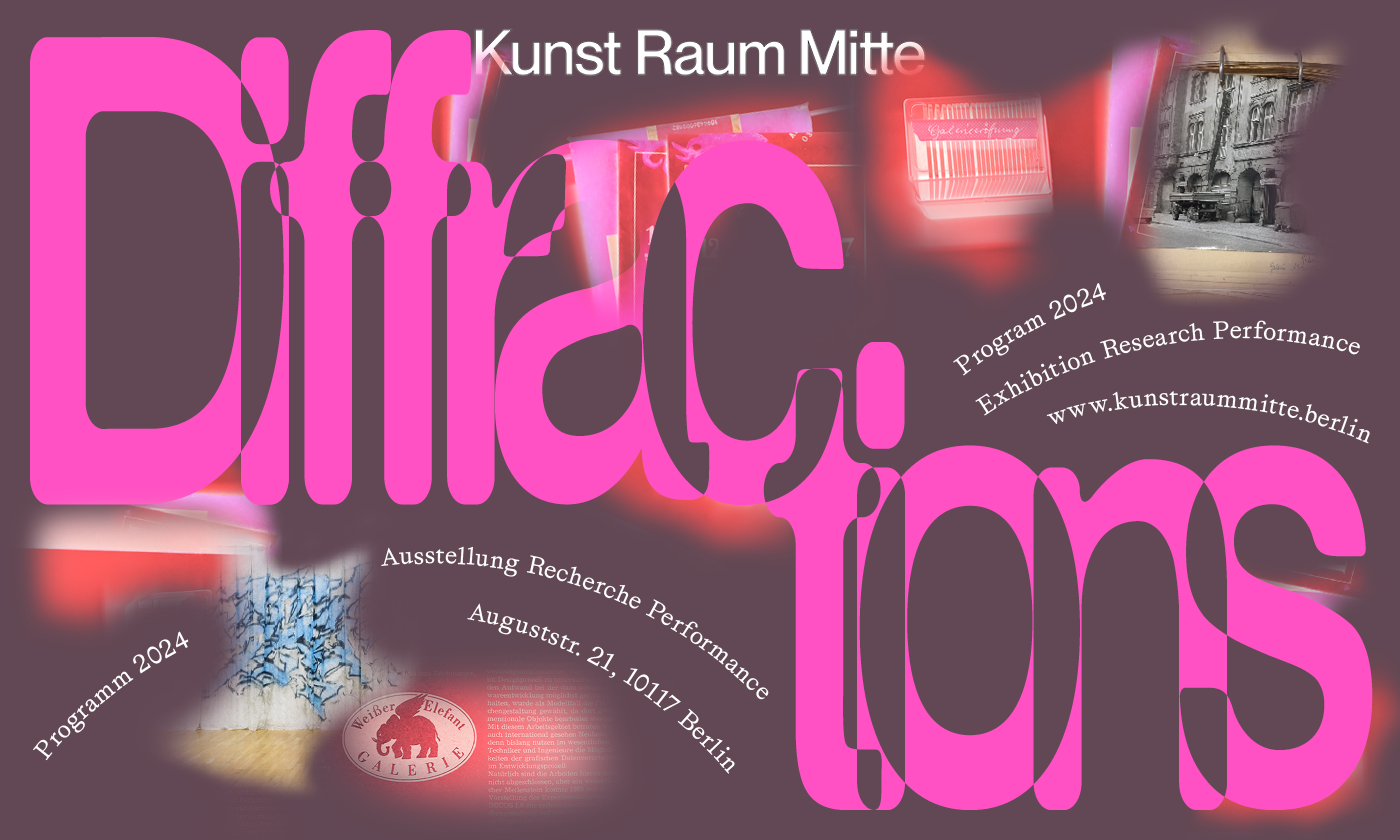DIFFRACTIONS explores the site as a process of the mutual interference between matter and time. Founded in 1987 as galerie weisser elefant in East Berlin, the municipal exhibition space was renamed Kunst Raum Mitte by the Department of Art, Culture and History in 2024 to shed new light on the gallery’s history. Curators Agnieszka Roguski and Natalie Keppler were commissioned to curate a program for the new orientation of the space. In their role as curators, they employ strategies of artistic and curatorial research to engage with the site’s structures, inviting the public into the process.
The program DIFFRACTIONS stages an “interference pattern” (Karen Barad) of the various layers of time and their compositions. Unlike reflection, which mirrors a specific counterpart, diffraction—the bending of waves around an obstacle—reveals the overlap of impulses. It transcends conventional linear and hierarchical orders. How can new perspectives on the past and future be created in Kunst Raum Mitte? What invisible entanglements of matter and history exist?
DIFFRACTIONS counters the economic and technological exploitations of the present by activating resistant and immaterial structures. The communal aspect of Kunst Raum Mitte drives this initiative: following research processes and collaborative neighborhood formats, an exhibition is showcasing the site’s transformative potential. Additionally, historical material is made accessible through an exhibition display developed by designer Martha Schwindling. These historical and geopolitical components connect to related contexts. Through the exploration of invisible and deviant aspects, contemporary perspectives are revealed, questioning power structures through everyday, implicit actions.
DIFFRACTIONS unfolds in three sequences: Collecting & Un/Learning, Commoning, and Transforming. The aim is to create interfaces to performance, materiality and history, infrastructure, and community through various formats: workshops, walks, performances, an exhibition, talks, an open-air screening, and a research residency. The communal exhibition venue’s space is constantly challenged, occupied, expanded, and transformed in its architecture and social orientation.




